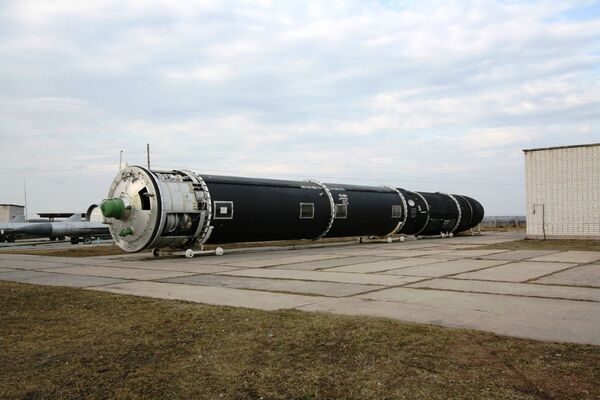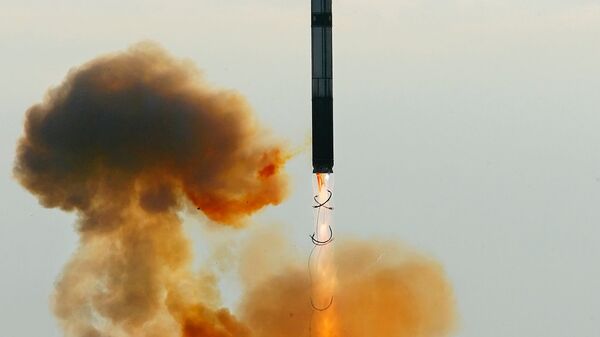Russia's stocks of R-36M2 Voyevoda (NATO designation SS-18 Satan) could be converted for civilian use, Roscosmos director general Dmitry Rogozin has announced.
"There is a method of salvaging known as 'salvage by launch'…We could easily adapt [the R-36] for projects involving the launch of small spacecraft into civilian orbits," Rogozin said, speaking about the missile's fate during a visit to the Krasnoyarsk Machine Building Plant defence enterprise on Saturday.
"The issue is under discussion. This method specifically should be spread to the disposal of all missiles which are removed from combat duty," Rogozin added.
According to the Roscosmos chief, the concept for a technological life cycle which incorporates post-retirement use should be deliberately introduced into the latest Russian missile systems, including the Sarmat, a new strategic missile expected to replace the R-36 and enter into service with the Missile Forces two years from now.

Rogozin's comments weren't the first time officials have proposed this unique 'recycling' method for the rocket. Earlier, Russian missile engineers proposed converting the missile for use against asteroids posing an imminent threat to Earth, saying the missiles' standard hydrazine-based fuel made them perfectly suited for fighting small space objects with little advance warning.
In 2018, a source in the Russian space agency said that the retired weapons could be used to launch satellites and other small spacecraft into orbit, with Topol ICBMs also considered for this purpose.
Russia and Ukraine have already enjoyed success with converting the R-36 with the Dnepr rocket system, capable of launching satellites weighing up to 4,500 kg into low earth orbit, and payloads weighing up to 3,200 kg to the ISS. Between 1999 and 2015, the system was launched a total of 22 times, with 21 launches successful, with over 140 spacecraft from 20 countries sent into orbit.
In March 2015, amid the collapse of Russian-Ukrainian relations following the February 2014 coup d'état, launches, which took place at the Baikonur cosmondrome in Kazakhstan, were stopped. The Dnepr programme had a total of 150 missiles at its disposal, with well over 100 remaining unused after the programme's cancellation.




